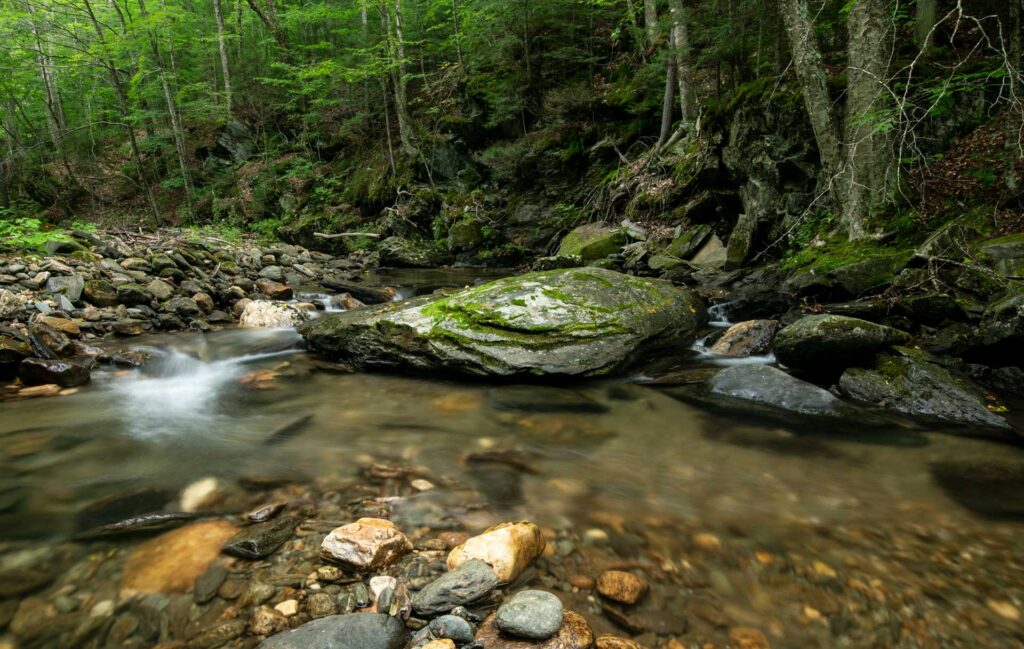
Forest Health & Biodiversity
Protecting our woodlands for the well-being of wildlife, plant life, micro-communities…and us.

The ongoing conservation of valuable forests and wetlands in Vermont is essential for the health of our environment, and for the treasure trove of biodiversity.
Selected grantees
These organizations are working for the long-term preservation and protection of undeveloped lands and wilderness resources.

Trust for Public Land
Focusing in Vermont on conservation of large forestland, the national Trust for Public Land has protected over 65,000 acres as additions to the Green Mountain Forest, state parks and state forests, and has helped conserve new community forests:
- Because it doesn’t hold land or conservation easements, TPL can work speedily and strategically to develop projects, bring in funding, obtain permits, solve challenges, and finally transfer protected land to public ownership.
- Recent projects include Rolston Rest, nearly 2,800 acres of important wildlife habitat, aquatic resources and hiking trails in Chittenden, Mendon and Killington; and Lincoln Peak, over 600 acres rich with recreation opportunities, headwater streams and rare habitat in Warren and Lincoln.
- New locally owned public woodlands with trail networks include the 245-acre Huntington Community Forest, now used as an outdoor classroom by the local school.

Vermont Natural Resources Council
The Vermont Natural Resources Council works for better wetland and forestland protections:
- In 2021, VNRC campaigned successfully for legislation that gives wetlands that same protections as lakes, ponds, rivers and streams — and better safeguards them against the impacts of major projects like oil and gas pipelines.
- VNRC continues to work with the Conservation Law Foundation, Vermont Audubon and The Nature Conservancy to strengthen wetland protection and expand the map of protected wetlands.
- Vermont’s use-value appraisal program, or “current use,” reduces property taxes on managed forest- and farmland — and VNRC has been building support for expanding the program to cover forestland that’s not actively harvested.

Northeast Wilderness Trust
Northeast Wilderness Trust protects lands that can remain forever wild:
- Through conservation easements and private ownership, NWT safeguards wilderness areas with high levels of biodiversity and expansive, connected habitats.
- Around the region, over 73,000 total acres have been conserved — including 10,218 acres of wetlands — that altogether store over 6 million metric tons of carbon.
- More than 15,000 protected acres in Vermont include Woodbury Mtn. Wilderness Preserve, 6,098 acres near the state capital with two major headwaters and globally significant bird habitat; Bramhall Wilderness Preserve, 359 acres in Bridgewater Corners with a mature forest; and Blue Mtn. Wilderness Sanctuary in Ryegate, 825 acres with an impressive diversity of wildlife.

Standing Trees
Standing Trees is a coalition of forest lovers and wildland advocates working for policy and legal action to protect and restore New England’s native old forests on federal and state lands:
- Safeguarding old forests is a proven means of supporting biodiversity, storing carbon and cleaning our water and air. Yet so far, just 3% of New England forests are now managed as wildlands.
- Woodlands allowed to grow to maturity are more resilient to climate changes, store more carbon, and reduce the sediment- and nutrient-loading of water resources.
Apply for a Grant
Let’s shape Vermont’s future together. Learn more about our funding requirements and how to apply for a grant through the Lintilac Foundation.